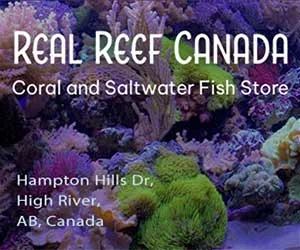Exploring the Stunning Congo Tetra: A Gem in Your Aquarium
If you’re searching for a fish species that combines elegance, vibrant colors, and ease of care, look no further than the Congo Tetra (Phenacogrammus interruptus). In this blog post, we’ll take a deep dive into the world of the Congo Tetra, covering its Latin and common names, size, natural habitat, species variations, diet, alternative names, feeding requirements, ease of care, and crucial water conditions. Plus, we’ll share some additional tips to enhance your Congo Tetra-keeping experience.
Latin (or Common) Name and Size
The Congo Tetra, scientifically known as Phenacogrammus interruptus, is a strikingly beautiful fish species that belongs to the Alestidae family. These graceful tetras typically reach a size of 2.5 to 3 inches (6.4 to 7.6 cm), making them a perfect choice for both beginner and experienced aquarists.
Natural Habitat
Congo Tetras are native to the clear, slow-moving rivers and streams of Central Africa, particularly in the Congo River basin. In their natural habitat, they thrive amidst dense vegetation, submerged roots, and fallen leaves. These conditions are essential for their well-being, as they provide shelter and mimic their native ecosystem.
Species Variations
While the Phenacogrammus interruptus is the most well-known species, there are a few related Congo Tetra species, each with its unique characteristics. These include the Phenacogrammus deheyni, known as the Blue Congo Tetra, and the Phenacogrammus aurantiacus, often referred to as the Orange Congo Tetra. Each of these species showcases varying colors and patterns.
Diet
Congo Tetras are omnivores, which means they have a versatile diet. In their natural habitat, they feed on small aquatic invertebrates, insects, and plant matter. In an aquarium, you can provide them with a balanced diet by offering high-quality flake food, micro-pellets, freeze-dried or live foods such as brine shrimp, daphnia, and bloodworms. A varied diet will help maintain their vibrant colors and overall health.
Alternative Names
While Congo Tetra is the most common name, they are also known as the Giant Congo Tetra or the African Tetra due to their impressive size and African origin.
Feeding Requirements
Yes, Congo Tetras require regular feeding to thrive. Offer them small, frequent meals throughout the day, taking care not to overfeed. Observe their feeding behavior to gauge their appetite and adjust the portion sizes accordingly.
Ease of Care
Congo Tetras are generally considered easy to care for, making them an excellent choice for aquarists of all levels. They are peaceful and sociable fish that thrive in community aquariums. When selecting tankmates, choose non-aggressive species that share similar water parameter requirements.
Water Conditions
Maintaining appropriate water conditions is crucial to the health and well-being of your Congo Tetras. Here are key parameters to consider:
- Temperature: Keep the water temperature between 73-82°F (23-28°C).
- pH Level: Maintain a slightly acidic to neutral pH, ideally around 6.0-7.5.
- Hardness: Aim for soft to moderately hard water, with a general hardness (GH) of 2-15 dGH.
- Filtration: Employ efficient filtration and perform regular water changes to maintain water quality and clarity.
Additional Tips for Your Congo Tetras
- Decorate your aquarium with live plants, driftwood, and rocks to mimic their natural habitat and provide hiding spots.
- Congo Tetras are schooling fish, so keep them in groups of at least six individuals to ensure their well-being and encourage their natural behavior.
Conclusion
In conclusion, the Congo Tetra (Phenacogrammus interruptus) is a stunning addition to any aquarium. With their dazzling appearance, ease of care, and peaceful nature, they are a favored choice among fish enthusiasts. By creating an environment that mimics their natural habitat and offering a varied diet, you can enjoy the beauty and grace of Congo Tetras in your own aquatic haven. Whether you call them Congo Tetras, Giant Congo Tetras, or African Tetras, one thing is certain – they will bring a touch of elegance to your underwater world.












